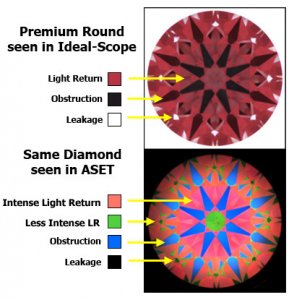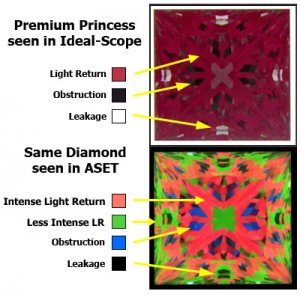twinstealth
Rough_Rock
- Joined
- Apr 30, 2007
- Messages
- 27
These are some really great tools to have available for the online buyer... or at least they seem to be to this beginner and first-time poster. (...no i havent been lurking a long time like most, but i have spent hours upon weeks on end trying to learn enough to avoid making a big mistake in this whole diamond buying thing)
So my first question... what if in the IdealScope, red signifies reflected light, and white displays lost light, what does black tell you? There are very distinct trapezoid shapes in the princess cuts that are consitently black under the idealscope as i thumb through the AGS000''s on whiteflash... just curious.
Secondly, what are the colors in the ASET? Im seeing green, blue, red, etc etc. What is this (each) supposed to be telling the observer about the diamond?
So my first question... what if in the IdealScope, red signifies reflected light, and white displays lost light, what does black tell you? There are very distinct trapezoid shapes in the princess cuts that are consitently black under the idealscope as i thumb through the AGS000''s on whiteflash... just curious.
Secondly, what are the colors in the ASET? Im seeing green, blue, red, etc etc. What is this (each) supposed to be telling the observer about the diamond?











300x240.png)